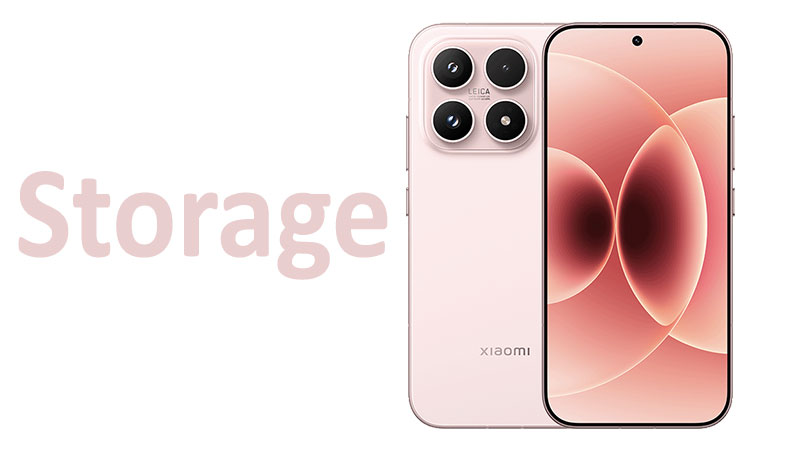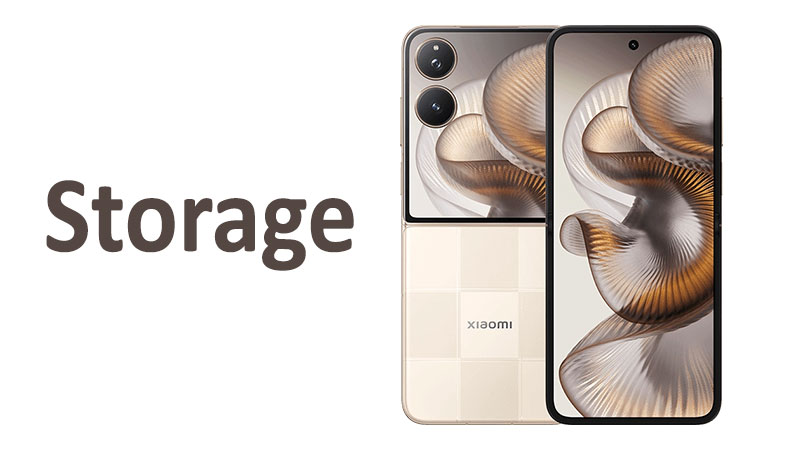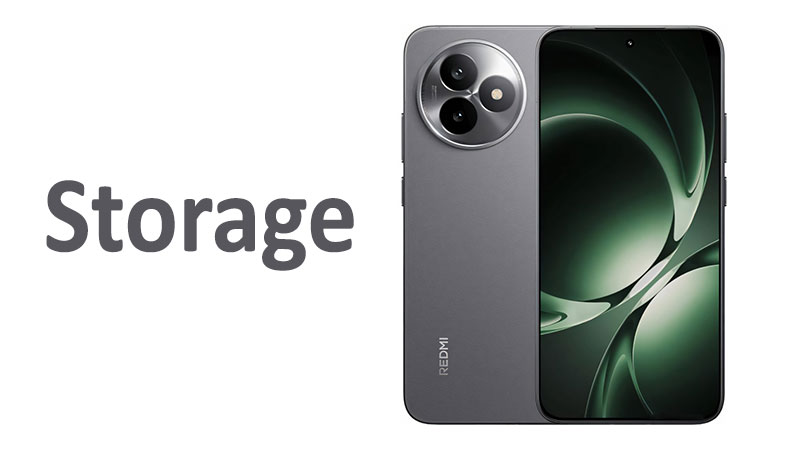Xiaomi 17 Storage specifications are central to the phone’s performance. The choice of capacity and the underlying storage type fundamentally shape the user experience. This comprehensive guide explores every aspect of the Xiaomi 17’s internal memory. It provides crucial information for potential buyers and technology enthusiasts. We will delve into the advanced UFS 4.1 technology and evaluate the 256GB and 512GB options. Understanding these features helps you make an informed investment decision. The modern smartphone demands incredible speed and ample space. The Xiaomi 17 delivers on both counts.
Decoding UFS 4.1: The Core Storage Technology
The Xiaomi 17 utilizes Universal Flash Storage 4.1, commonly known as UFS 4.1. This is the latest generation of embedded memory technology. It represents a massive leap forward from previous standards. UFS 4.1 delivers lightning-fast data transfer speeds. It allows next-generation applications and mobile networks to perform efficiently. This technology is vital for high-end flagship smartphones today.
Technical Superiority of UFS 4.1
UFS 4.1 is designed for peak performance in mobile devices. It achieves a theoretical interface speed of up to 23.2 gigabits per second (Gbps) per lane. This results in a staggering 46.4 Gbps per device. These figures are double the speed offered by the older UFS 3.1 standard. This increase in bandwidth removes previous performance bottlenecks.
Sequential read speeds on UFS 4.1 can reach approximately 4,200 megabytes per second (MB/s). Sequential write speeds push up to about 2,800 MB/s. These speeds are essential for demanding tasks. They improve the speed of app loading and large file transfers. Furthermore, they are crucial for smooth 8K video recording.
Comparison: UFS 4.1 Versus UFS 3.1
The shift from UFS 3.1 to UFS 4.1 is significant for the user. UFS 3.1 was already fast, offering roughly 2,100 MB/s read and 1,200 MB/s write speeds. UFS 4.1 nearly doubles these metrics. This speed difference affects several daily operations.
App installation finishes much faster on the Xiaomi 17. The time spent loading complex mobile games decreases dramatically. UFS 4.1 also boasts better power efficiency. It is approximately 46% more efficient than UFS 3.1. This improved efficiency is critical for maintaining battery life during heavy use. The Xiaomi 17 enjoys longer usage times, especially during continuous data access.
UFS 4.1 Versus Competitors’ Storage
Many mid-range and budget phones still use UFS 3.1 or even older eMMC storage. eMMC storage is much slower, often maxing out around 400 MB/s. UFS 4.1 in the Xiaomi 17 offers ten times the speed of eMMC. Even some competing flagship phones utilize specialized NVMe storage that UFS 4.1 often surpasses. Modern UFS modules deliver superior speeds with better integration. This gives the Xiaomi 17 a performance edge in overall system responsiveness.
Key Features That Define UFS 4.1
UFS 4.1 introduces several features beyond raw speed. These innovations contribute to system stability and user experience. They also enhance the security of the data on your device.
The WriteBooster Advantage
The WriteBooster feature significantly improves write performance. It uses a portion of the user data area as a temporary SLC (Single Level Cell) buffer. This SLC buffer handles data writes much quicker than the main memory. In UFS 4.1, this feature is optimized for better resource management. The host processor can manage the buffer size dynamically. This optimization speeds up large file downloads and high-definition video capture.
UFS 4.1 supports partial flushing of this WriteBooster buffer. This new capability allows the system to retain specific data in the buffer. It prevents unnecessary flushing of all buffered data. This fine-grained control boosts overall read performance. It also helps in improving system responsiveness during demanding multi-tasking.
Enhanced Security with Advanced RPMB
Data security remains paramount for all flagship phones. UFS 4.1 implements robust data protection through Advanced Replay Protected Memory Block (RPMB). RPMB is a secure area in the memory. It stores sensitive content like passwords and critical business data.
Advanced RPMB in UFS 4.1 offers enhanced performance. It protects larger data sizes per input/output (I/O) transaction. This upgrade strengthens the Xiaomi 17’s defense against cyberattacks. It ensures your most intimate data stays protected.
Faster Initialization with HS-LSS
High-Speed Link Startup Sequence (HS-LSS) is another key improvement. Conventional UFS requires a link startup to be performed at a lower speed. HS-LSS allows initialization at a much faster rate. Kioxia testing showed this can reduce link startup time by approximately 70%. For the user, this means the phone boots up faster. It also reduces lag when the storage device initializes after DeepSleep mode.
Xiaomi 17 Storage Capacity Options
The Xiaomi 17 offers two primary storage configurations. Buyers can choose between the 256GB and 512GB internal memory variants. Both options pair with the cutting-edge UFS 4.1 technology. Your choice largely depends on your usage habits and budget. Each capacity tier suits different types of users.
The 256GB Storage Variant: Ideal for Most Users
The 256GB model serves as the baseline for the Xiaomi 17. For most everyday smartphone users, 256GB provides ample space. This capacity easily handles a large volume of applications. It also stores thousands of high-resolution photos and hours of HD video.
Pros and Cons of 256GB
A major advantage of the 256GB option is its affordability. It offers the same peak UFS 4.1 speed as the larger model. This makes it an excellent value proposition. Users get flagship performance without the top-tier price tag.
The main drawback is the potential for future limitations. The modern trend sees increasing file sizes. 4K video recording, high-fidelity music, and large game installations quickly consume space. Content creators and avid mobile gamers might find 256GB restrictive over a two-year period. You might need to rely heavily on cloud storage.
Who Should Choose 256GB?
The 256GB Xiaomi 17 is best for the average consumer. This includes users who primarily stream media. It suits people who regularly back up their photos to the cloud. It is perfect for those who do not download many massive games. This capacity is future-proof enough for standard usage patterns.
The 512GB Storage Variant: Power and Longevity
The 512GB model caters to the power user and the content creation crowd. This variant removes almost all concerns about running out of space. It provides a comfortable buffer for heavy, continuous usage.
Pros and Cons of 512GB
The biggest pro is the sheer peace of mind it offers. The 512GB capacity allows you to store entire media libraries locally. You can download multiple console-quality games without hesitation. Furthermore, it allows for extensive high-resolution video shooting. This capacity ensures the phone remains relevant for many years. You will not need to manage storage space frequently.
The primary disadvantage is the higher upfront cost. The price difference between 256GB and 512GB can be substantial. For some users, this extra cost may not translate into tangible daily benefits. If you never use more than 150GB of space, the extra capacity is wasted investment.
Who Should Choose 512GB?
The 512GB Xiaomi 17 is the clear choice for specific user groups. Professional photographers and videographers need this space. Users who record large amounts of 4K or 8K video will benefit greatly. Dedicated mobile gamers with numerous large titles should also choose 512GB. Finally, anyone who keeps their phones for three or more years should invest in the 512GB model.
Buyer’s Guide: Choosing Your Xiaomi 17 Storage
Selecting the correct storage capacity is crucial for long-term satisfaction. The speed provided by UFS 4.1 is non-negotiable across all models. The capacity, however, directly impacts cost and usage freedom. Consider these factors before making your purchase decision.
Assessing Your Current Storage Consumption
Examine your existing phone’s storage usage. Are you currently struggling to manage 128GB or 256GB? If you consistently hover near the limit, choose the larger 512GB option. If your current usage is well under 100GB, the 256GB Xiaomi 17 is more than adequate. Be honest about your downloading and media habits.
High-Demand Use Cases and File Sizes
Modern mobile gaming pushes storage limits aggressively. Titles can easily exceed 10GB or even 20GB each. A collection of ten major games can consume half of the 256GB base model. Think about how many games you want to keep installed simultaneously.
Video recording is the fastest consumer of high-speed storage. Recording 4K video at 60 frames per second (fps) uses tremendous space. High-efficiency video coding (HEVC) helps, but files remain large. Content creators who shoot raw footage on their phones need the 512GB variant. UFS 4.1 ensures these large files write instantly, preventing dropped frames.
Future-Proofing and Longevity
The decision between 256GB and 512GB heavily influences device longevity. Even if 256GB meets your needs today, consider future requirements. App sizes will continue to grow. Phone operating systems and security updates require more space over time. Investing in the 512GB model acts as a financial safeguard. It delays the point where storage constraints force an upgrade.
The Role of Cloud Services
The necessity of large local storage is often balanced by cloud services. Services like Google Photos, OneDrive, or Dropbox are great for offloading media. If you rely on the cloud, the 256GB model becomes a compelling choice. You can delete local copies of old photos and videos.
However, cloud dependence requires a fast and stable internet connection. Accessing 4K videos or large work files instantly requires local storage. If you travel frequently or have unreliable connectivity, the 512GB variant offers independence. It keeps your important data ready at UFS 4.1 speeds.
The Performance Impact of UFS 4.1 on Daily Life
UFS 4.1 is not just a marketing term. It fundamentally changes how you interact with your phone. The speed and efficiency translate directly into a superior user experience. Understanding these effects reinforces the value of the Xiaomi 17.
Faster Booting and App Loading
High-Speed Link Startup Sequence (HS-LSS) makes the Xiaomi 17 boot up remarkably quickly. More importantly, UFS 4.1 reduces application launch times. Even complex apps launch almost instantaneously. This speed gives the phone a perceived snappiness that is immediately noticeable.
Enhancing Mobile Gaming and Multitasking
Mobile gaming benefits immensely from UFS 4.1. Large texture files and level data load from storage into RAM much faster. This reduces loading screen delays significantly. Lower latency in the storage system means smoother gameplay.
The Multi-Circular Queue (MCQ) feature, introduced in earlier UFS versions and refined in 4.1, is essential here. MCQ allows the processor to prioritize I/O commands for different tasks. The Xiaomi 17 can juggle a high-performance game and a background download seamlessly. This simultaneous data access makes multitasking more efficient than ever before.
Power Efficiency and Thermal Management
The UFS 4.1 design achieves significant energy savings. It draws less power during active read and write operations. This improvement, up to 46% over UFS 3.1, extends battery life. It means you can perform intensive tasks for longer periods.
Furthermore, lower power draw generates less heat. Better thermal management helps prevent performance throttling. The Xiaomi 17 maintains its high speeds longer during extended gaming or video editing sessions. The cool operation protects both the storage chip and the battery health.
Deep Dive: Optimizing the Storage System
Xiaomi employs sophisticated software optimization to complement the UFS 4.1 hardware. The integration of MIUI or HyperOS with the high-speed storage is key. Xiaomi maximizes the potential of this technology.
Software and Hardware Synergy
The operating system manages data read and write requests dynamically. The software intelligently utilizes the WriteBooster buffer for temporary tasks. This ensures the fastest possible sequential write speeds when needed. For instance, the system triggers the WriteBooster when recording 8K video. This avoids buffer overflow and ensures frame integrity.
The UFS 4.1 specification also supports Zoned UFS. This feature improves read-write efficiency. It reduces unnecessary data relocation inside the storage device. This reduction in “write amplification” extends the lifespan of the NAND flash memory. It makes the Xiaomi 17’s storage exceptionally durable.
The RAM and Storage Connection
The speed of the Universal Flash Storage affects the efficiency of RAM. When the system needs to swap data between the phone’s fast RAM and the storage, speed is everything. UFS 4.1 facilitates this process quickly and efficiently. This synergy enhances the phone’s overall system memory performance. The result is a device that rarely stutters, even under extreme load.
Long-Term Degradation and Reliability
All flash storage degrades over time. It wears out after a certain number of write and erase cycles. UFS 4.1 components utilize high-quality NAND flash technology. Paired with intelligent controllers, they offer exceptional durability. The advanced memory management functions minimize wear and tear. This ensures the Xiaomi 17 storage maintains its performance and reliability throughout its lifespan.
Final Conclusion and Investment Advice
The Xiaomi 17 Storage package is truly top-of-the-line. It combines the blazing speed of UFS 4.1 with practical capacity choices. This synergy ensures the device handles all current and future mobile demands. The UFS 4.1 technology is an investment in responsiveness and longevity. It delivers double the speed and significantly better power efficiency than its predecessor.
Choosing between 256GB and 512GB requires a simple self-assessment. If you are a light-to-moderate user, the 256GB model offers great value. It gives you flagship speed at the most accessible price point. If you are a dedicated gamer, a heavy content creator, or someone who keeps their phone for years, choose the 512GB Xiaomi 17. The higher capacity future-proofs your investment. Ultimately, the Xiaomi 17 offers premium storage performance regardless of the capacity you select. The speed and efficiency of UFS 4.1 will redefine your smartphone experience.
Frequently Asked Questions (FAQ)
1. What is the maximum sequential read speed of the Xiaomi 17’s storage?
The Xiaomi 17 uses UFS 4.1 storage. This technology supports sequential read speeds up to approximately 4,200 MB/s.
2. Does the 256GB Xiaomi 17 have a slower UFS version than the 512GB model?
No, both the 256GB and 512GB variants of the Xiaomi 17 utilize the same high-speed UFS 4.1 standard. The speed remains consistent across capacities.
3. How does UFS 4.1 benefit mobile gaming performance?
UFS 4.1 decreases game loading times substantially. It allows large game assets and textures to transfer quickly from storage to RAM. This improves overall frame rate stability.
4. Is the storage on the Xiaomi 17 expandable using an SD card?
The Xiaomi 17, being a flagship device, typically does not offer a microSD card slot for expandable storage. You must choose the right internal capacity at purchase.
5. What is the WriteBooster feature in UFS 4.1?
WriteBooster is an optimization feature. It uses a temporary, extremely fast SLC cache to handle data writes. This drastically increases the phone’s sequential write speed for large files.



